मुझे यकीन है कि आप जानते हैं कि स्टील रोल बनाने की मशीन निर्माण परियोजनाओं के लिए एक महत्वपूर्ण उपकरण है। इस लेख में, हम निर्माण परियोजनाओं के लिए स्टील रोल बनाने की मशीन के उपयोग के महत्व के साथ-साथ इसके कुछ उदाहरणों के बारे में बात करेंगे।
स्टील रोल बनाने की मशीन क्या है?
ए स्टील रोल बनाने की मशीन एक प्रकार का निर्माण उपकरण है जिसका उपयोग स्टील को विभिन्न आकृतियों और आकारों में बनाने के लिए किया जाता है। यह प्रक्रिया स्टील को रोलर्स की एक श्रृंखला के माध्यम से पारित करके की जाती है, जो धीरे-धीरे इसे वांछित आकार में आकार देती है। मशीन का उपयोग विभिन्न प्रकार के विभिन्न उत्पादों, जैसे बीम, जॉइस्ट, ट्रस और कॉलम बनाने के लिए किया जा सकता है।
बाजार में कुछ अलग प्रकार की स्टील रोल बनाने वाली मशीनें उपलब्ध हैं, प्रत्येक को विशिष्ट अनुप्रयोगों के लिए डिज़ाइन किया गया है। उदाहरण के लिए, कुछ मशीनें बड़े संरचनात्मक घटकों को बनाने के लिए बेहतर अनुकूल होती हैं, जबकि अन्य छोटे उत्पादों के लिए बेहतर अनुकूल होती हैं। ज्यादातर मामलों में, आपको जिस प्रकार की मशीन की आवश्यकता होगी, वह उस विशिष्ट परियोजना पर निर्भर करेगा, जिस पर आप काम कर रहे हैं।
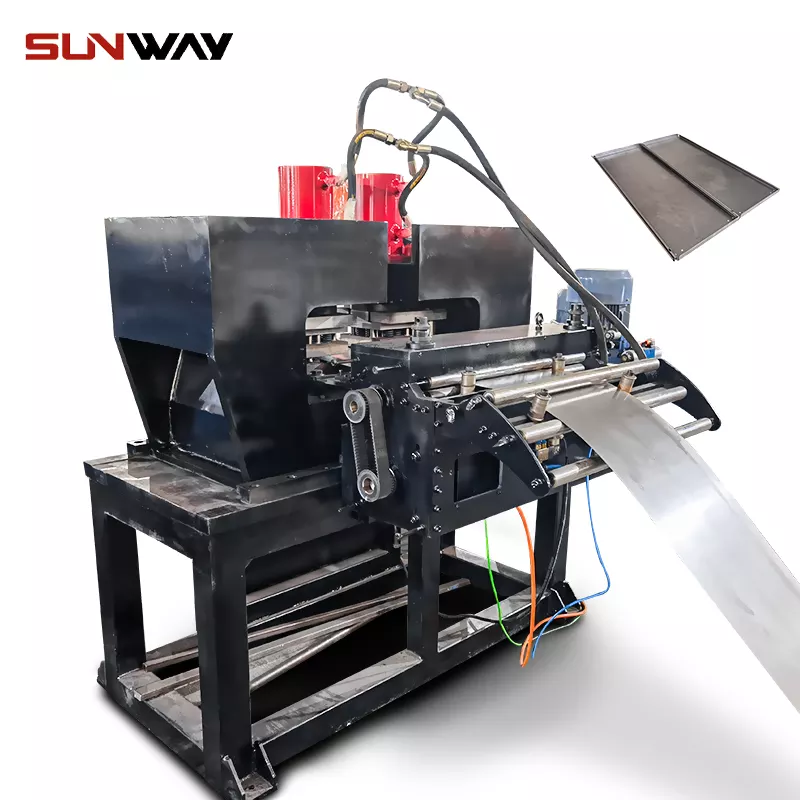
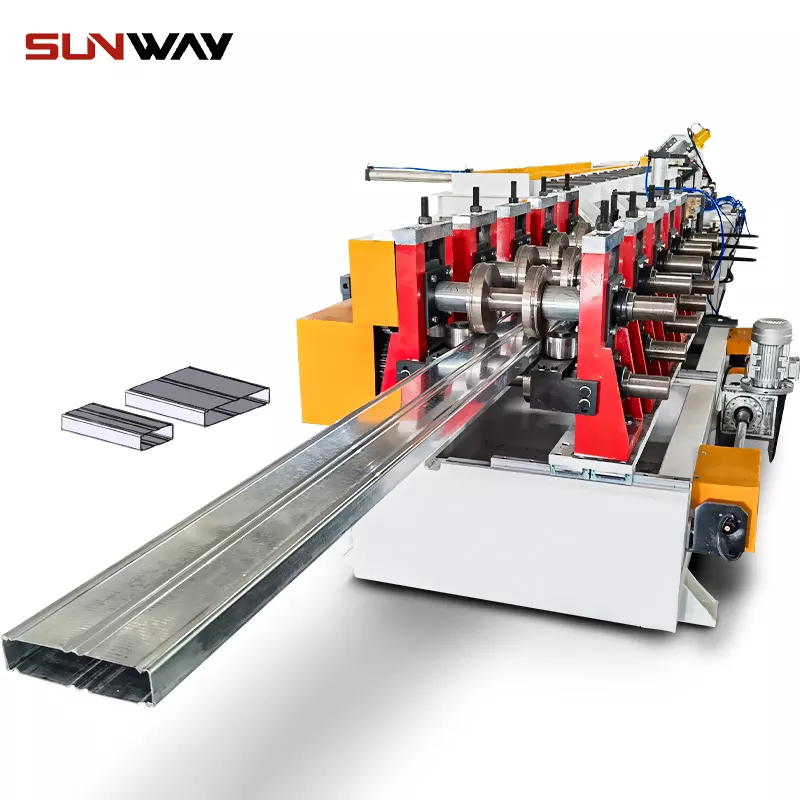
स्टील रोल बनाने की मशीन के प्रकार
स्टील रोल बनाने वाली मशीनों के तीन मुख्य प्रकार हैं:
- सिंगल-स्टैंड मशीनें: इन मशीनों में रोल का एक सेट होता है, और इन्हें आम तौर पर कोण, चैनल और जेड-सेक्शन जैसे साधारण आकार के लिए उपयोग किया जाता है।
- मल्टी-स्टैंड मशीनें: इन मशीनों में रोल के दो या दो से अधिक सेट होते हैं, और इनका उपयोग अधिक जटिल आकृतियों जैसे टी-सेक्शन और आई-बीम के लिए किया जाता है।
- सतत मशीनें: इन मशीनों में सामग्री का एक निरंतर लूप होता है जिसे लंबे समय तक उत्पाद बनाने के लिए रोलर्स के माध्यम से खिलाया जाता है।
-
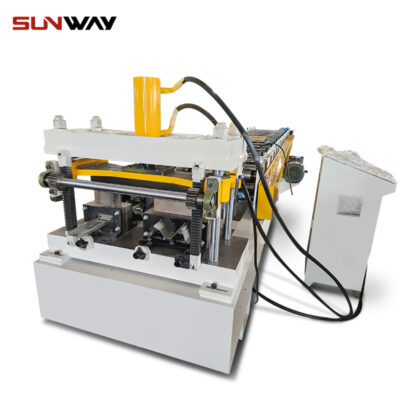 Multi Profiles Roll Forming Machine
Multi Profiles Roll Forming Machine -
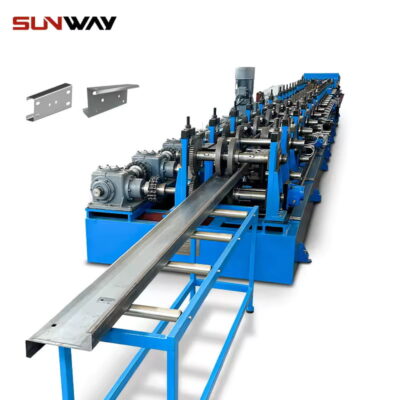 Auto Changeable C Z Purline Machine
Auto Changeable C Z Purline Machine -
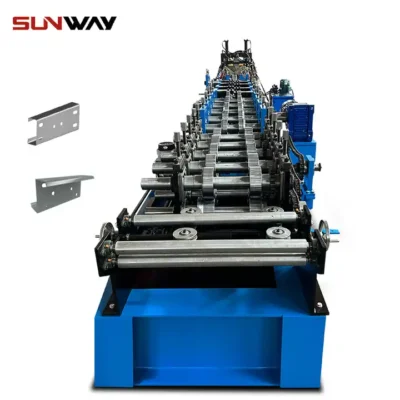 Semi Auto Size Changeable CZ Purlin Roll Forming Machine
Semi Auto Size Changeable CZ Purlin Roll Forming Machine -
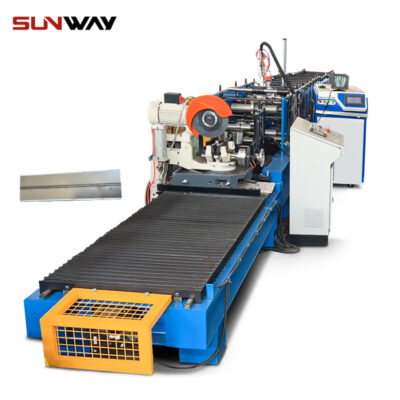 Laser Welding Square Pipe Roll Forming Machine
Laser Welding Square Pipe Roll Forming Machine -
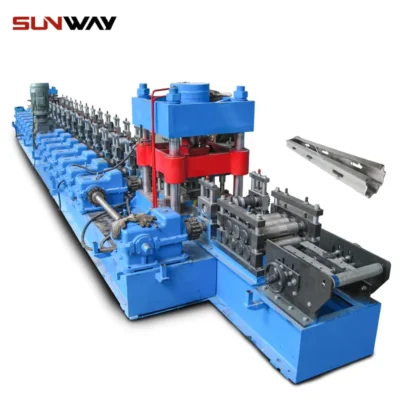 वाइनयार्ड पोस्ट रोल बनाने की मशीन
वाइनयार्ड पोस्ट रोल बनाने की मशीन -
 मचान तख़्त रोल बनाने की मशीन
मचान तख़्त रोल बनाने की मशीन -
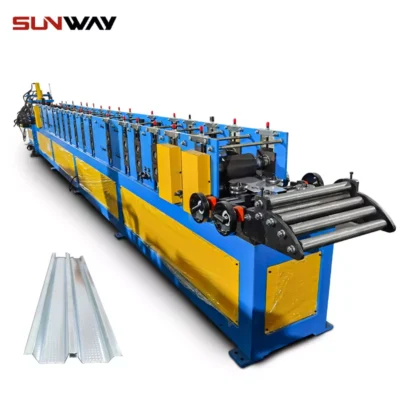 लाइट गेज स्टील रोल बनाने की मशीन
लाइट गेज स्टील रोल बनाने की मशीन -
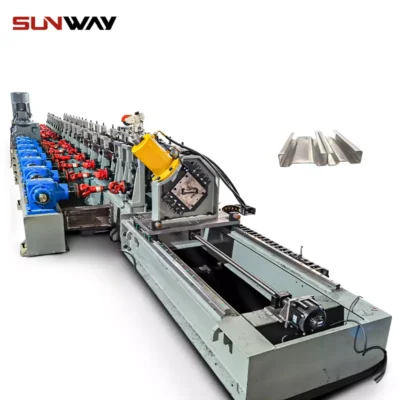 ऑटो आकार बदलने योग्य सिग्मा शहतीर रोल बनाने की मशीन
ऑटो आकार बदलने योग्य सिग्मा शहतीर रोल बनाने की मशीन -
 ऑटो आकार बदलने योग्य CZ शहतीर रोल बनाने की मशीन
ऑटो आकार बदलने योग्य CZ शहतीर रोल बनाने की मशीन
स्टील रोल बनाने की मशीन के लाभ
एक स्टील रोल बनाने की मशीन आपके व्यवसाय के लिए कई तरह के लाभ प्रदान कर सकती है, जिसमें शामिल हैं:
1. उत्पादन क्षमता में वृद्धि: स्टील रोल बनाने वाली मशीनों को भागों के उत्पादन के लिए आवश्यक समय और श्रम को कम करके उत्पादन क्षमता बढ़ाने के लिए डिज़ाइन किया गया है। कई मामलों में, रोल बनाने वाली मशीन 60 फीट प्रति मिनट की दर से भागों का उत्पादन कर सकती है।
2. कम सामग्री अपशिष्ट: स्टील रोल बनाना मशीनें आपको अंतिम उत्पाद की ताकत और अखंडता को बनाए रखते हुए पतले गेज सामग्री का उपयोग करने की अनुमति देकर भौतिक कचरे को कम करने में मदद कर सकती हैं। इससे कच्चे माल की लागत पर पैसे बचाने में मदद मिल सकती है।
3. बढ़ा हुआ लचीलापन: स्टील रोल बनाने वाली मशीनें जब उत्पादन किए जा सकने वाले भागों के प्रकारों की बात आती हैं तो लचीलेपन में वृद्धि की पेशकश करती हैं। डाइस को जल्दी से बदलने की क्षमता के साथ, आप एक ही मशीन से कई प्रकार के पुर्जे बना सकते हैं।
4. बेहतर गुणवत्ता नियंत्रण: क्योंकि स्टील रोल बनाने वाली मशीनें लगातार आयामों और सहनशीलता के साथ भागों का निर्माण करती हैं, वे निर्माण प्रक्रिया के दौरान गुणवत्ता नियंत्रण में सुधार करने में मदद कर सकती हैं। यह कम दोषपूर्ण भागों और कम स्क्रैप सामग्री की ओर जाता है।
स्टील रोल बनाने की मशीन के बिना निर्माण करने की कोशिश में समस्या
यदि आप निर्माण व्यवसाय में हैं, तो आप जानते हैं कि स्टील रोल बनाने की मशीन एक आवश्यक उपकरण है। इसके बिना, आप बस निर्माण नहीं कर सकते। लेकिन क्या होता है जब आप एक के बिना निर्माण करने की कोशिश करते हैं? समस्या यह है कि आप हर तरह की मुश्किलों का सामना करेंगे।
शुरुआत करने वालों के लिए, आप सीधी या समान दीवारें नहीं बना पाएंगे। निर्माण में उपयोग की जाने वाली स्टील की चादरें हाथ से मुड़ी हुई नहीं होती हैं। आवश्यक आकार प्राप्त करने के लिए उन्हें मशीन के माध्यम से खिलाया जाना चाहिए।
इसके अतिरिक्त, आपकी परियोजनाओं को पूरा होने में अधिक समय लगेगा क्योंकि आप आदिम उपकरणों के साथ काम करेंगे। और अगर सटीकता आपके लिए महत्वपूर्ण है, तो इसके बारे में भूल जाइए - बिना मशीन के स्टील को काटने और मापने की कोशिश करना लगभग असंभव है।
अंत में, स्टील रोल बनाने की मशीन के बिना निर्माण करने की कोशिश आपदा के लिए एक नुस्खा है। यदि आप चाहते हैं कि आपका प्रोजेक्ट सफल हो, तो शुरुआत से ही सही उपकरण में निवेश करें। यह आपको सड़क के नीचे समय, पैसा और सिरदर्द बचाएगा।
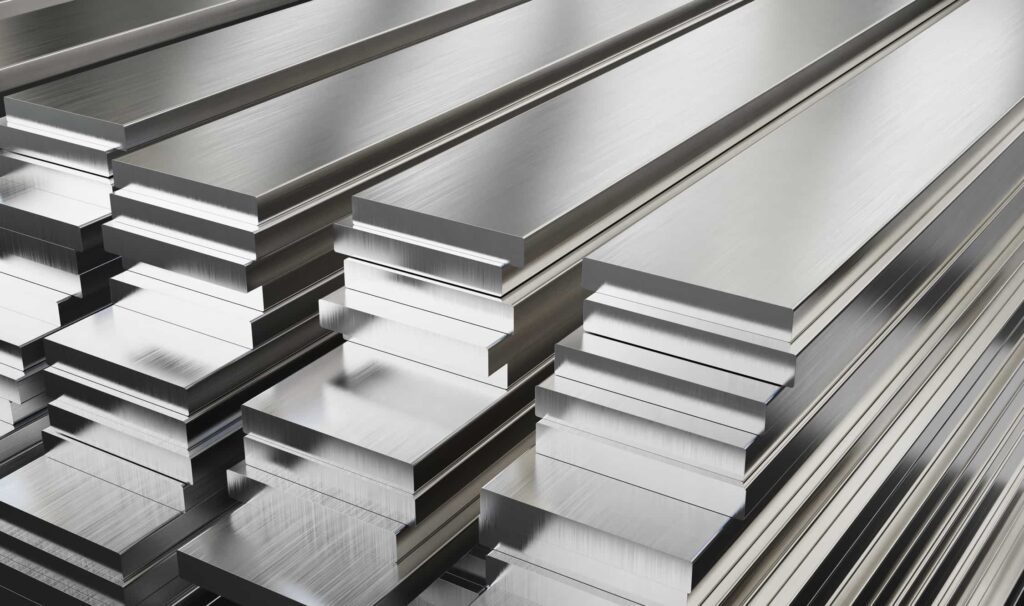
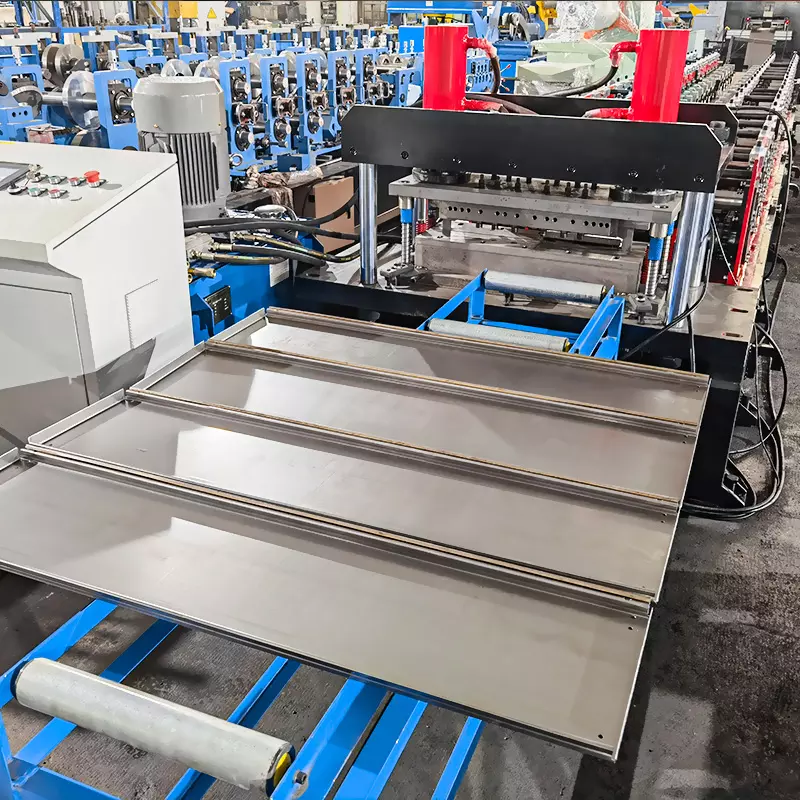
अपने प्रोजेक्ट के लिए सही स्टील रोल बनाने की मशीन कैसे चुनें?
अपनी परियोजना के लिए सही स्टील रोल बनाने की मशीन का चयन करते समय कुछ महत्वपूर्ण बातों का ध्यान रखना चाहिए। पहली वह सामग्री है जिसका आप उपयोग करेंगे। विभिन्न मशीनों को विभिन्न सामग्रियों के लिए डिज़ाइन किया गया है, इसलिए यह महत्वपूर्ण है कि आप जो काम कर रहे हैं उसके साथ संगत हो।
दूसरा सामग्री की मोटाई है। मोटी सामग्री के लिए अधिक शक्तिशाली मशीन की आवश्यकता होगी, इसलिए अपना चयन करते समय इसे ध्यान में रखना सुनिश्चित करें।
अंत में, उस गति पर विचार करें जिस पर आपको काम करने की आवश्यकता है। तेज़ मशीनें स्पष्ट रूप से अधिक महंगी होंगी, लेकिन यदि समय सार है तो यह निवेश के लायक हो सकता है।
निष्कर्ष
स्टील रोल बनाने की मशीन निर्माण परियोजनाओं के लिए एक महत्वपूर्ण उपकरण है। यह आपको स्टील से विभिन्न प्रकार के आकार और आकार बनाने में मदद कर सकता है, जिसका उपयोग फ्रेमिंग से लेकर छत बनाने तक हर चीज के लिए किया जा सकता है। यदि आप एक निर्माण परियोजना शुरू करने पर विचार कर रहे हैं, तो सुनिश्चित करें कि आप गुणवत्ता वाले स्टील रोल बनाने की मशीन में निवेश करते हैं ताकि आप अपनी सामग्री से अधिक लाभ उठा सकें।
Frequently Asked Questions (Supplemental)
1) What profiles can a Steel Roll Forming Machine produce for construction?
- Common profiles include C/Z purlins, studs and tracks (light gauge framing), box beams, channels, angles, sigma purlins, roofing panels (trapezoidal, corrugated, standing seam), and scaffold planks.
2) What tolerances are realistic for structural components like C/Z purlins?
- With calibrated guides and servo cut-to-length, expect length ±0.8–1.5 mm over 3–12 m and hole position ±0.5–1.0 mm with inline punching. Profile height/leg width ±0.5 mm is typical for quality tooling.
3) Which coil specifications work best for high-speed construction profiles?
- For general structural purlins: galvanized steel 350–550 MPa yield, 0.8–2.5 mm thickness. For roofing/cladding: galvanized/galvalume 0.35–0.8 mm. Ensure good flatness (≤5 mm over 1.5 m), consistent coating mass (e.g., Z275/AZ150), and low surface defects.
4) How do I size drive power and line speed for my project?
- As a rule of thumb: light-gauge lines (0.4–0.8 mm) operate at 25–60 m/min with 7.5–15 kW drives; structural purlins (1.5–3.0 mm) at 15–35 m/min with 15–37 kW. Choose based on profile depth, thickness, and inline punching/embossing requirements.
5) What maintenance has the biggest impact on product quality and uptime?
- Roll cleanliness and surface finish (target Ra ≤0.8 μm for bare steel, ≤0.4 μm for pre-painted), roll parallelism, lubrication quality, encoder and blade calibration, and periodic torque/runout checks on stands.
2025 Industry Trends for Steel Roll Forming Machines
- AI-assisted setup and recipe optimization reduce changeover variability and scrap, especially on multi-profile lines (C/Z/sigma).
- Predictive maintenance (PdM) with vibration and temperature sensors on gearboxes, bearings, and cut-off units becomes standard on new lines.
- Energy-optimized drives with regenerative braking and smart idle features lower kWh/ton and meet ESG targets.
- Inline QC: Camera-based edge/rib inspection and SPC dashboards are increasingly bundled by OEMs.
- Faster changeovers: Cassette tooling and auto-size change (C/Z) reduce downtime for contractors and service centers serving varied SKUs.
Benchmark KPIs: 2023 vs 2025 Best-in-Class
| KPI | 2023 Typical | 2025 Best-in-Class | Operational Impact | Sources/Notes |
|---|---|---|---|---|
| Changeover time (profile/size) | 2–5 h | 45–120 min | Higher OEE, less scrap | OEM demos; plant reports |
| First-pass yield (pre-painted roofing) | 95–97% | 98–99% | Fewer reworks/claims | The Fabricator technical library |
| Energy intensity (kWh/ton) | 120–170 | 90–120 | -5–20% energy cost | World Steel benchmarks: https://worldsteel.org |
| Unplanned downtime | 7–12% | 3–5% | +Availability | McKinsey on PdM: https://www.mckinsey.com |
| Surface defect rate (per 10k sheets) | 25–40 | <12 | Better cosmetics | ISO lubrication guidance: https://www.iso.org |
Notes:
- KPI improvements assume servo cut-off, consistent coil quality, and trained operators.
- Structural lines forming thicker gauges may run slower but can still achieve FPY/OEE gains with PdM and setup assists.
Latest Research Cases
Case Study 1: Auto-Size Change C/Z Purlin Line Boosts Uptime (2025)
Background: A regional steel service center supplied varied C/Z purlin sizes to fast-track projects; manual size changes caused 3–4 hour downtimes and frequent length errors.
Solution: Implemented auto-size change C/Z roll forming with motorized stand movement, stored recipes, and servo cut-to-length; added encoder calibration routine and PdM sensors on gearboxes.
Results: Average changeover fell to 58 minutes; length accuracy improved from ±2.5 mm to ±1.0 mm; OEE increased by 8.5 points; ROI achieved in 11 months.
Case Study 2: Inline Vision Reduces Roofing Panel Claims (2024)
Background: A roofing panel producer faced returns due to micro-scratches and edge waviness on pre-painted coils at 40 m/min.
Solution: Installed camera-based edge/rib inspection with SPC alerts, upgraded to paint-wettable, low-residue lubricant, and polished critical rolls to Ra ≤0.4 μm.
Results: Cosmetic defect claims dropped 41%; first-pass yield rose from 96.7% to 98.8%; scrap reduced by 1.6%; payback in 9 months.
Expert Opinions
- Dr. Emily Novak, Principal Engineer, Metal Forming Institute (Ohio State University)
Viewpoint: “Consistent pass progression and verified roll parallelism are the biggest levers to control springback and dimensional accuracy in structural profiles.” Source: https://engineering.osu.edu - Chris Fletcher, Director of Tooling Engineering, Roll-Kraft
Viewpoint: “For pre-painted steel, roller finish and alignment matter as much as geometry. Target Ra ≤0.4 μm and lock torque values to prevent setup drift across shifts.” Source: https://www.roll-kraft.com - Maria Kühn, Functional Safety Lead, TÜV Rheinland
Viewpoint: “Modern roll lines should validate safety PLC performance levels per ISO 13849-1 and integrate HMI-guided LOTO to reduce maintenance incidents.” Source: https://www.tuv.com
Practical Tools and Resources
- Roll forming setup/troubleshooting guides: Roll-Kraft Resource Center https://www.roll-kraft.com/roll-forming-resource-center
- Energy and sustainability benchmarks: World Steel Association https://worldsteel.org
- Predictive maintenance sensors/platforms: ifm moneo https://www.ifm.com; Hansford Sensors https://www.hansfordsensors.com
- Vision inspection systems: Keyence https://www.keyence.com; Cognex https://www.cognex.com
- Safety and LOTO programs: OSHA https://www.osha.gov/lockout-tagout
- Process know-how: The Fabricator technical articles https://www.thefabricator.com
Quick implementation checklist for your Steel Roll Forming Machine:
- Store and version-control recipes; label shims and torque specs.
- Calibrate cut-to-length encoder monthly; track blade cycles and sharpen proactively.
- Verify roll parallelism and stand alignment; inspect roll surface finish routinely.
- Use appropriate lubricants (low-residue for pre-painted); monitor cleanliness and pH.
- Add PdM sensors to gearboxes/cut-off; review trends weekly and plan maintenance windows.
- Validate safety PLC performance level and test e-stops/interlocks quarterly.
Target keyword usage examples:
- Upgrading your Steel Roll Forming Machine with auto-size change improves throughput for construction projects.
- Predictive maintenance on steel roll forming lines reduces downtime and enhances quality for structural components.
Citations and further reading:
- World Steel Association: Energy and ESG benchmarks https://worldsteel.org
- The Fabricator: Roll forming best practices and defect prevention https://www.thefabricator.com
- McKinsey: Predictive maintenance impact in manufacturing https://www.mckinsey.com
- ISO: Safety and lubrication standards catalogue https://www.iso.org
Last updated: 2025-10-24
Changelog: Added 5 supplemental FAQs, 2025 trends with KPI table, two recent case studies, expert viewpoints with sources, and a tools/resources checklist specific to steel roll forming for construction projects.
Next review date & triggers: 2026-05-20 or earlier if ISO 13849-1/IEC 62061 updates, OEMs release new auto-size change systems, or energy/regulatory requirements for coated coils change.
